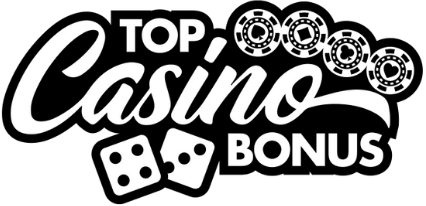Understanding craps odds and payouts
Most folks walk up to the craps table thinking it’s just a chaotic whirlwind of dice and shouting. Truth is, the game is wrapped tightly in odds and payouts that, when properly understood, separate the amateurs from the ones who know how to stretch a bankroll across a long night. If you’re only throwing chips on numbers because the guy next to you did it, you’re burning through your bankroll faster than you can say “yo eleven.”
Table of contents
The foundation: house edge and payouts
Craps doesn’t favor the reckless. Every bet on the table carries its own house edge, and knowing which bets carry the weight is everything. The Pass Line and Don’t Pass are your bread and butter, both offering house edges under 1.5%. That’s a rare luxury in a casino. You’d think more people would cling to it, but flashier bets often steal attention.
Pass Line vs. Don’t Pass: understanding roots
Let’s break it down: Pass Line wins on 7 or 11 on the come-out roll and loses on 2, 3, or 12. Everything else sets a point. You win if that point lands again before a 7. Don’t Pass flips that logic, you win on 2 or 3, lose on 7 or 11, push on 12. After the point is set, you want a 7 before the point hits again. It’s stoic, calculated, the kind of bet the cynical veterans prefer.
Odds bets: the hidden gem
One of the best-kept secrets in the casino? Odds bets behind your Pass or Don’t Pass line. These are pure, zero house edge extensions to your original bet. Place double, triple, even up to 100x odds in some places, and your payout reflects perfect mathematical odds: 2:1 on 4 or 10, 3:2 on 5 or 9, 6:5 on 6 or 8. It’s where the real players double down.
Bets to treat with caution
Now, here’s where novice players fall into holes you could drive a dump truck through. Center table bets might look tempting with those fat payout numbers, “Yo” pays 15:1, and boxcars pay 30:1, but they’re dripping with house edge, some climbing past 16%. These bets aren’t just sucker plays, they’re bankroll leeches.
Hardways and proposition bets
The hardways (hard 4, 6, 8, 10) carry the illusion of clever betting. But check the math, a hard 6 or 8 pays 9:1, while the true odds are 10:1. Casinos thrive on folks who don’t spot that discrepancy. Prop bets like “Any 7” pay 4:1, but the real odds are 5:1. Over time, you’ll find that overpaying for excitement rarely ends well.
Comparing traditional bets to advanced strategies
With age and wisdom comes the knowledge that pacing and placement rule this game. Most players never take the time to understand place bets or lay bets. Place a bet on 6 or 8, and you get paid 7:6 when it hits, better return than most parts of the table. On the flip side, lay bets allow you to bet against a number, something only seasoned bettors even talk about.
Place vs. Buy bets
Place bets on numbers like 4 or 10 pay 9:5, but if you switch to a Buy bet and accept a 5% commission, you get paid at true odds of 2:1. That sounds small, but over a hundred rolls, that difference in payout can mean a tank of gas or another hour of play. Remember, edges don’t have to be wide, they just have to be consistent.
Payouts explained with real-world logic
I always tell students to think in ratios and expected value. Picture rolling the dice 36 times, the classic probability spread. You’ll hit a 7 six times, a 6 or 8 five times, and so on. Understanding this geometry means knowing where and when to bet. It’s like carpentry: if you don’t measure twice, you’re cutting wood blindfolded.
Personal story: beating the long game
There was a game in Reno, 2008. Guy next to me keeps betting the Field, screaming every time he hits a 2 or 12. I stay quiet, grinding Pass Line with odds and Place bets on the 6 and 8. Two hours later, he’s gone broke, and I’m ahead five hundred without sweating. That’s the difference right there, flash burns fast; good habits hold water.
Intrinsic value and payout tables
Always refer to tables that show you what a bet pays and what the true odds are. That delta, even when it’s a hairline, separates the math from the myth. Remember: the casino only needs a small edge to win in the long run. Your job is to keep those edges as tight as your dice toss.
Modern distractions and flashy software
Craps tables nowadays sit next to digital interfaces designed by the likes of Red Tiger Gaming or Thunderkick. Beautiful stuff, sure, but style ain’t strategy. These attract eyes with interactive features, but many forget fundamentals in the process: discipline, patience, and math prevail.
In the age of online play, even platforms built on robust engines like WMS or Quickspin can’t do the thinking for you. If you don’t approach each bet with calculation, no fancy animations will save your chips from vanishing.
Understanding risk versus thrill
Many confuse risk with thrill. That’s one of the earliest lessons every craps player needs to digest. This game’s exciting because it teeters on unpredictability, but real success comes from stacking the small edges in your favor. Chasing one-time big wins blinds you to the beauty of strategic betting.
There’s a fine line between enjoying the game and letting it engulf you. If you feel the pull getting too strong, take the time to reflect on the difference between responsible gambling and problem gambling. This game should never cost more than what you bring for entertainment value. Once emotions outweigh mathematics, trouble begins.
Final thoughts: play the long game, not the loud one
Craps is a marathon, not a sprint. There’s immense joy in walking away after a few hours, knowing you played smart, placed odds correctly, and avoided the casino’s traps. Ignore the loudest voices at the table, most are wrong. Follow the math, know your odds, and use payouts like tools in a well-worn belt. The game rewards those who respect its structure.





0 Comments